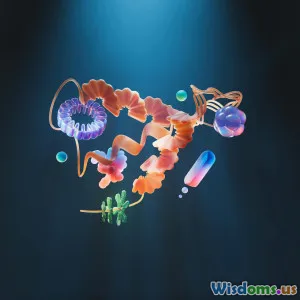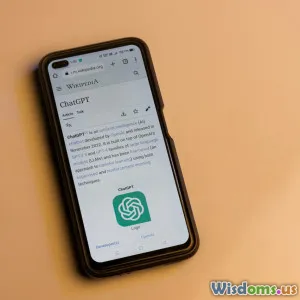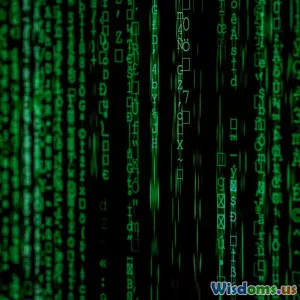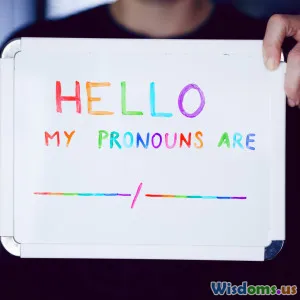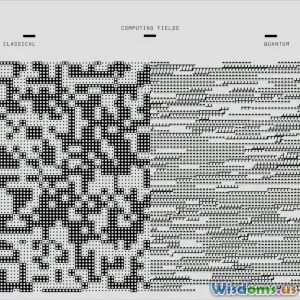
Demystifying Quantum Programming: A Beginner Friendly Tutorial
8 min read Unveil the basics of quantum programming with this beginner-friendly tutorial that deciphers complex concepts into easy steps. (0 Reviews)
Demystifying Quantum Programming: A Beginner Friendly Tutorial
Quantum computing is no longer a distant dream confined to theoretical physics labs. It is rapidly emerging as a revolutionary technology with the potential to transform industries ranging from cryptography to pharmaceuticals. However, for many beginners, the idea of programming a quantum computer feels like deciphering an alien language. This tutorial aims to break down these barriers by demystifying quantum programming, presenting key concepts and practical insights in an accessible way.
Introduction: Why Quantum Programming Matters
Classical computers process information using bits represented as 0s or 1s, but quantum computers use qubits, which unlock powerful new processing capabilities thanks to quantum phenomena like superposition and entanglement.
Why should you care? Because quantum algorithms can solve certain problems exponentially faster than classical algorithms — for example, factoring large numbers (which underpins much of modern cryptography), searching databases, or simulating molecular structures.
Companies like IBM, Google, and Microsoft have made quantum computers accessible via cloud platforms, spurring interest in quantum programming even among enthusiasts and students. Learning quantum programming today is akin to learning classical programming in the 1950s—it could open doors to cutting-edge innovation tomorrow.
Understanding the Basics of Quantum Programming
What is a Qubit?
A qubit is the fundamental unit of quantum information. Unlike classical bits which exist distinctly as 0 or 1, qubits can exist in a superposition of both states simultaneously. To grasp this, imagine a spinning coin that is not just heads or tails but in a probabilistic combination of both until observed.
Superposition and Measurement
Superposition enables quantum computers to process a vast number of possibilities simultaneously. However, when a qubit is measured, it 'collapses' to either 0 or 1, making the timing and nature of measurement a critical aspect of programming quantum algorithms.
Quantum Entanglement
Entanglement is a unique quantum property where pairs or groups of qubits become interconnected such that the state of one instantly influences the state of another, regardless of distance. This leads to correlations that classical systems cannot replicate, underpinning many quantum algorithms’ superior power.
Quantum Programming Languages and Frameworks
Several powerful quantum programming frameworks have been developed to facilitate writing quantum algorithms:
-
Qiskit (IBM): An open-source Python framework ideal for beginners, offering access to real quantum hardware via IBM Quantum Experience.
-
Cirq (Google): Focuses on designing, simulating, and running quantum circuits on Google’s systems.
-
Microsoft’s Q#: A robust quantum language integrated with Visual Studio, emphasizing modularity and scalability.
Through these languages, programmers create quantum circuits using gates analogous to classical logic gates but designed to manipulate qubits.
Core Concepts of Quantum Programming
Quantum Gates
Quantum gates manipulate qubit states. Common gates include:
- Hadamard gate (H): Creates superposition; converts a qubit from a definite state into an equal mixture of 0 and 1.
- Pauli-X gate: Quantum NOT gate, flipping |0⟩ to |1⟩ and vice versa.
- CNOT gate: A two-qubit gate for entanglement; flips the target qubit if the control qubit is |1⟩.
Programming a quantum computer means applying sequences of such gates to qubits.
Quantum Circuits
Quantum algorithms are structured as circuits consisting of qubits, gates, and measurements. These circuits form the basis for performing computational tasks.
Example: Creating a Superposition State
Here’s an example in Qiskit that creates a superposition of one qubit:
from qiskit import QuantumCircuit, Aer, execute
# Create a quantum circuit with 1 qubit and 1 classical bit
qc = QuantumCircuit(1, 1)
# Apply Hadamard gate to put qubit in superposition
qc.h(0)
# Measure the qubit
qc.measure(0, 0)
# Use Aer's qasm_simulator to simulate the circuit
simulator = Aer.get_backend('qasm_simulator')
result = execute(qc, simulator, shots=1024).result()
counts = result.get_counts(qc)
print(f"Measurement results: {counts}")
Running this simulation often yields nearly 50/50 results for measuring 0 or 1, representing the qubit's superposition.
Real-World Applications of Quantum Programming
Cryptography
Quantum annealers and general quantum computers threaten classical encryption schemes like RSA. Quantum programming is key for developing quantum-resistant algorithms (post-quantum cryptography) and leveraging algorithms like Shor’s algorithm for factoring.
Optimization
Problems requiring the evaluation of enormous possibilities, such as logistics or financial modeling, benefit tremendously from quantum algorithms tailored by programmers.
Drug Discovery and Material Science
Quantum simulations account for interactions at atomic levels more naturally than classical simulations. Quantum programs that model molecules can lead to faster drug design and novel materials.
Challenges and The Path Forward
Despite the promise, quantum programming is challenging:
- Noise and Decoherence: Real quantum systems are error-prone, and noise affects computation fidelity.
- Resource Constraints: Limited qubit counts impose complexity limits.
- Learning Curve: New programming paradigms and quantum mechanics principles require dedication.
However, continual advancements in quantum hardware and software, as well as community initiatives offering free tutorials and cloud access, make this an exciting time to learn.
Conclusion: Taking Your First Steps
Quantum programming is a thrilling frontier bridging physics and computer science. While it involves unfamiliar concepts, starting with accessible tools like Qiskit can provide hands-on experience and cultivate intuition.
The key is to grasp basic quantum mechanics concepts, understand quantum gates and circuits, and experiment with code. The future of technology increasingly depends on quantum advantages, and programmers who familiarize themselves now will be positioned at the forefront of this revolution.
Recommended Next Steps:
- Explore IBM Quantum Experience and run simple quantum programs online.
- Join online communities and forums to connect with quantum enthusiasts.
- Follow structured courses such as IBM’s Quantum Developer Certification or Microsoft’s quantum tutorials.
Embrace the quantum leap—your journey into quantum programming starts with a single qubit!
“The effort to build a working quantum computer will accelerate understanding and catalyze innovations across disciplines.” — John Preskill, Theoretical Physicist
Rate the Post
User Reviews
Popular Posts








